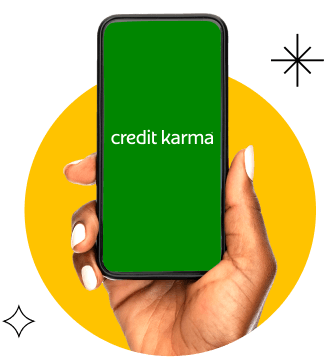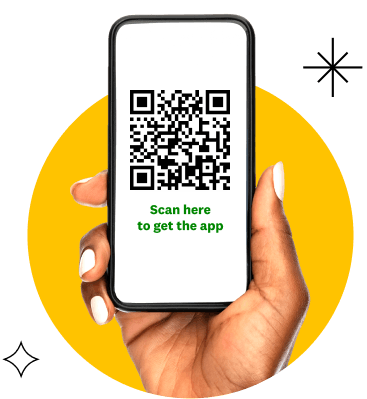In a Nutshell
Buy-now, pay-later apps can let you make a purchase and pay it off in installments, often with no interest or fees as long as you make payments on time. We’ve rounded up the best buy-now, pay-later mobile apps that offer benefits such as multiple payment options, flexible repayment terms and instant approvals.Buy-now, pay-later apps can let you purchase items today and pay for them in installments.
These apps can be convenient if you don’t have enough money to pay for a purchase upfront. Just make sure to check whether you’ll be charged any interest or fees in exchange for that convenience — and if so, how much. For a larger purchase, a personal loan or low-interest credit card could be a less-costly route.
If you think a buy-now, pay-later app is the best option for you, check out our picks for the top five and how they work.
- Best for multiple repayment options: Klarna
- Best for long repayment terms: Affirm
- Best for no-interest payments: Afterpay
- Best for payment flexibility: Sezzle
- Best for user experience: Quadpay
- What you should know about buy-now, pay-later apps
- How we picked these apps
Best for multiple repayment options: Klarna
Why Klarna stands out: The Klarna app offers several repayment options: Pay in four interest-free installments, pay in full within 30 days (also with no interest) or finance larger purchases with interest. You can also pay in full with a stored credit or debit card on the Klarna platform.
- Shop anywhere — You can shop using the Klarna app at any U.S. retailer that accepts credit or debit cards. If you’re approved for a payment plan, Klarna generates a single-use virtual card you can add to your Apple or Google Wallet and use at checkout. Some retailers — including Bloomingdale’s and Sephora — also offer Klarna as a payment method on their own websites.
- Credit inquiries — Klarna may do a soft credit inquiry each time you request to pay in four interest-free installments. This won’t affect your credit scores or show up on your credit reports. But Klarna may run a hard credit check if you choose one of its longer-term financing options. This hard inquiry could affect your credit scores.
- Rewards and deals — Klarna offers a free rewards club as well as exclusive deals from certain brands.
Read our full Klarna review to learn more.
Best for long repayment terms: Affirm
Why Affirm stands out: In addition to paying in four installments, Affirm offers longer loan terms on large purchase amounts. APRs range from 0% to 36%.
- Available at checkout or via virtual card — Affirm is a checkout option when you shop on participating retailers’ websites, such as Adidas, Walmart and West Elm. But you can also use Affirm online or in stores that don’t offer it at checkout. You’ll just need to apply for an Affirm loan online or on the Affirm app. If you’re approved, funds will be loaded onto a one-time virtual credit card that you can use where Visa is accepted.
- Down payment — Affirm may require a down payment if you don’t qualify for a loan that covers the full cost of your purchase.
- No fees — Affirm loans have no fees, including no service fees or late fees.
- Considers a range of factors — Affirm looks at factors beyond your credit scores, such as your account and payment history with the company, when considering your application for a loan.
Read reviews of Affirm review to learn more.
Best for no-interest payments: Afterpay
Why Afterpay stands out: Afterpay offers the ability to pay for your purchase in four installments with no interest. Payments are due every two weeks.
- Use at checkout or with a virtual card — The Afterpay payment option is available at online checkout when you shop at stores in the Afterpay directory, such as Athleta, Gap and Ulta Beauty. You can also use Afterpay in stores by downloading the app, setting up the Afterpay virtual card and using it as a payment method via Apple Pay or Google Pay.
- High late fees — Afterpay doesn’t charge any fees as long as you pay on time. But if you’re late on a payment, you could be hit with a fee as high as 25% of your loan amount.
- No credit check or reporting — Afterpay doesn’t perform any credit inquiries, and it doesn’t report your payments to any credit bureaus. That means a late payment won’t be reported and hurt your credit. But on the other hand, making on-time payments won’t help improve your credit.
- Spending limits change — Though Afterpay provides you an estimated spending limit, your purchase may still be declined if the retailer has specific limits. And your spending limit may change over time, based on your history of on-time or late payments and whether you’re a new Afterpay user.
Read our full Afterpay review for more info.
Best for payment flexibility: Sezzle
Why Sezzle stands out: Like Afterpay, Affirm and Klarna, Sezzle lets you pay over four interest-free installments. But with Sezzle, you can also reschedule your payments, delaying payment for up to two weeks if necessary. While your first reschedule is free, take note that any additional reschedules come with a fee.
- Available at select stores — Sezzle can be used as a payment method at participating retailers or at checkout with the Sezzle Virtual Card online or in store.
- Soft credit inquiry — Sezzle does a soft inquiry credit check that doesn’t affect your credit.
- Ability to build your credit — Sezzle offers you the option of having your payment history reported to the credit bureaus. If you’re trying to build your credit, choosing this option and making payments on time and in full could help improve your credit scores.
- Down payment likely required — You’ll most likely need to make a purchase down payment of 25%, which counts as your first installment payment.
- Rewards program — Sezzle Spend provides account credit through promotions, which you can use toward the final installment payment on future purchases.
Read our full Sezzle review to learn more.
Best for user experience: Zip (previously Quadpay)
Why Zip stands out: Zip lets you buy now and pay later in four payments. But it makes paying back your loan on time easier by automatically charging your linked debit or credit card when each installment is due. Just remember that if the payments are charged to a credit card, you’ll need to pay that credit card balance in full to avoid any interest charges.
- Use where Visa is accepted — You can use Zip with one of its retail partners or at any store where Visa is accepted. On the Zip app, you just search for a store or website and enter the purchase amount. If you’re approved, Zip will generate a virtual Visa card that you can use at checkout like any other debit or credit card.
- Chrome extension — Zip also offers a Chrome browser extension that you can use as you shop online. It’ll calculate your split payments, generate a virtual Visa card and autofill your payment info at checkout.
- Soft credit check — Zip performs a soft credit check, so there’s no impact to your credit scores.
Read our Zip review to learn more.
What you should know about buy-now, pay-later apps
Many buy-now, pay-later apps don’t charge interest — they make money by charging merchants a fee for each transaction.
But these apps may not be entirely free to you. If you don’t pay on time or your payment bounces, you could be charged substantial late fees or returned check fees. And on top of any fees, your credit could take a hit. While buy-now, pay-later companies generally use a soft credit inquiry to approve you for a loan, they may report late or missed payments to the credit bureaus, which can affect your credit scores.
A joint Credit Karma/Qualtrics survey found that of the 42% of Americans who have used a buy-now, pay-later service, 38% missed at least one payment. And 72% of those who missed a payment saw a decrease in their credit scores afterward.
While the option to pay for a shopping haul in installments may be enticing, it’ll mean juggling another payment on top of your other bills. If the purchase is a necessity, consider whether other options such as a small personal loan or lower-interest credit card may end up costing you less in the long run.
How we picked these apps
We evaluated a range of popular buy-now, pay-later apps, considering factors such as ease of use, participating retailers, interest rates, fees, and repayment terms and options to identify our favorites.
*Approval Odds are not a guarantee of approval. Credit Karma determines Approval Odds by comparing your credit profile to other Credit Karma members who were approved for the personal loan, or whether you meet certain criteria determined by the lender. Of course, there’s no such thing as a sure thing, but knowing your Approval Odds may help you narrow down your choices. For example, you may not be approved because you don’t meet the lender’s “ability to pay standard” after they verify your income and employment; or, you already have the maximum number of accounts with that specific lender.




